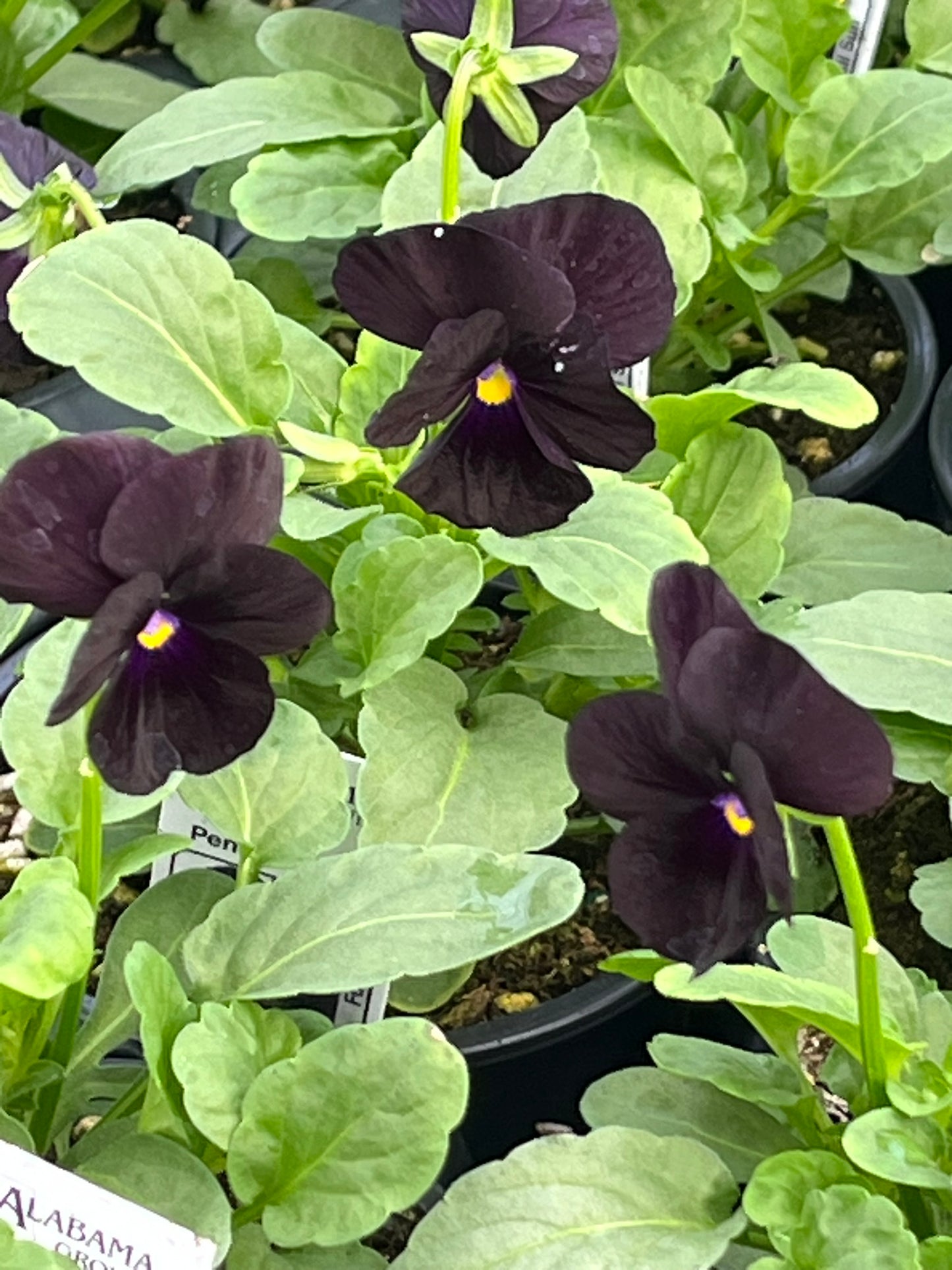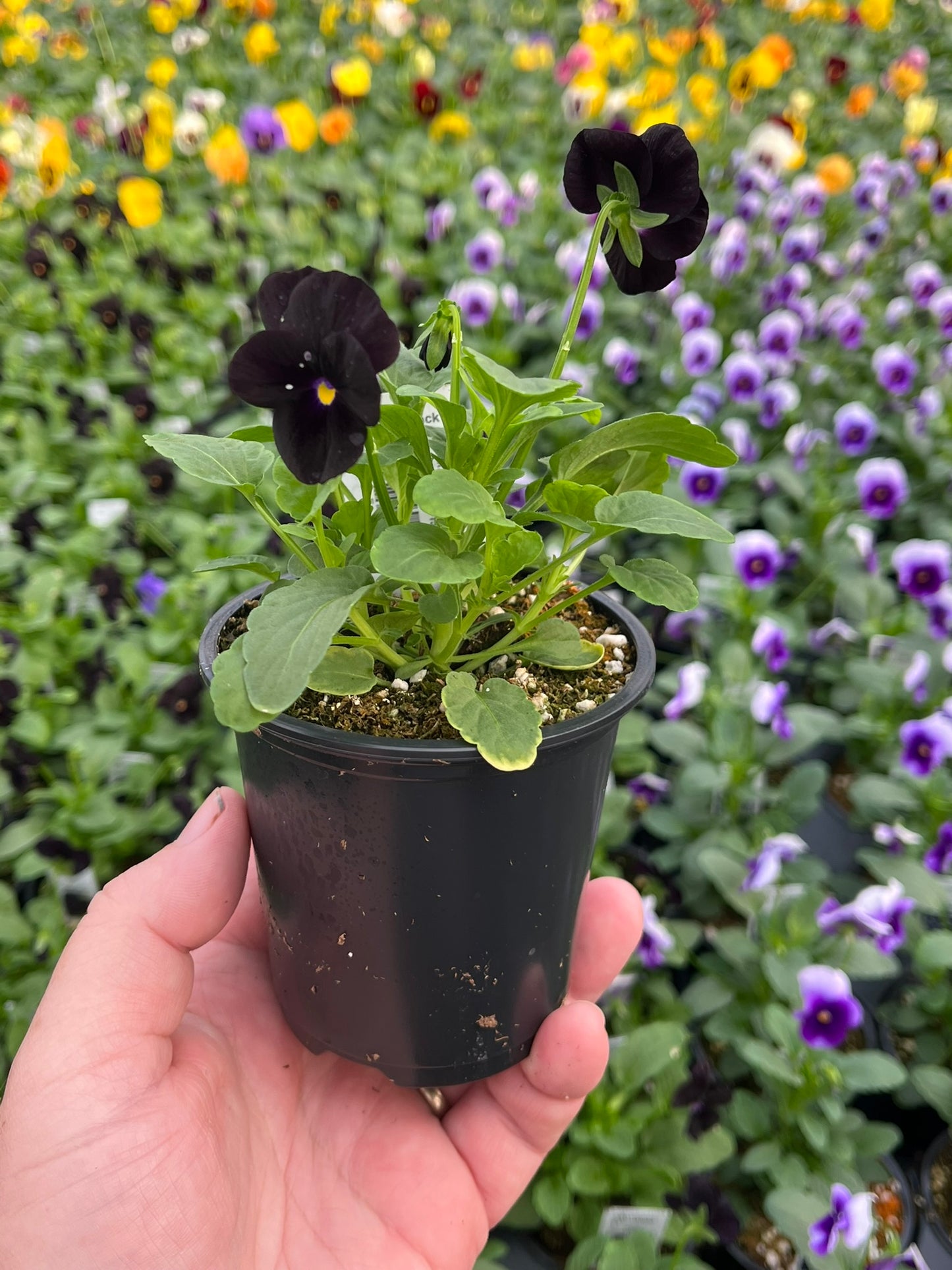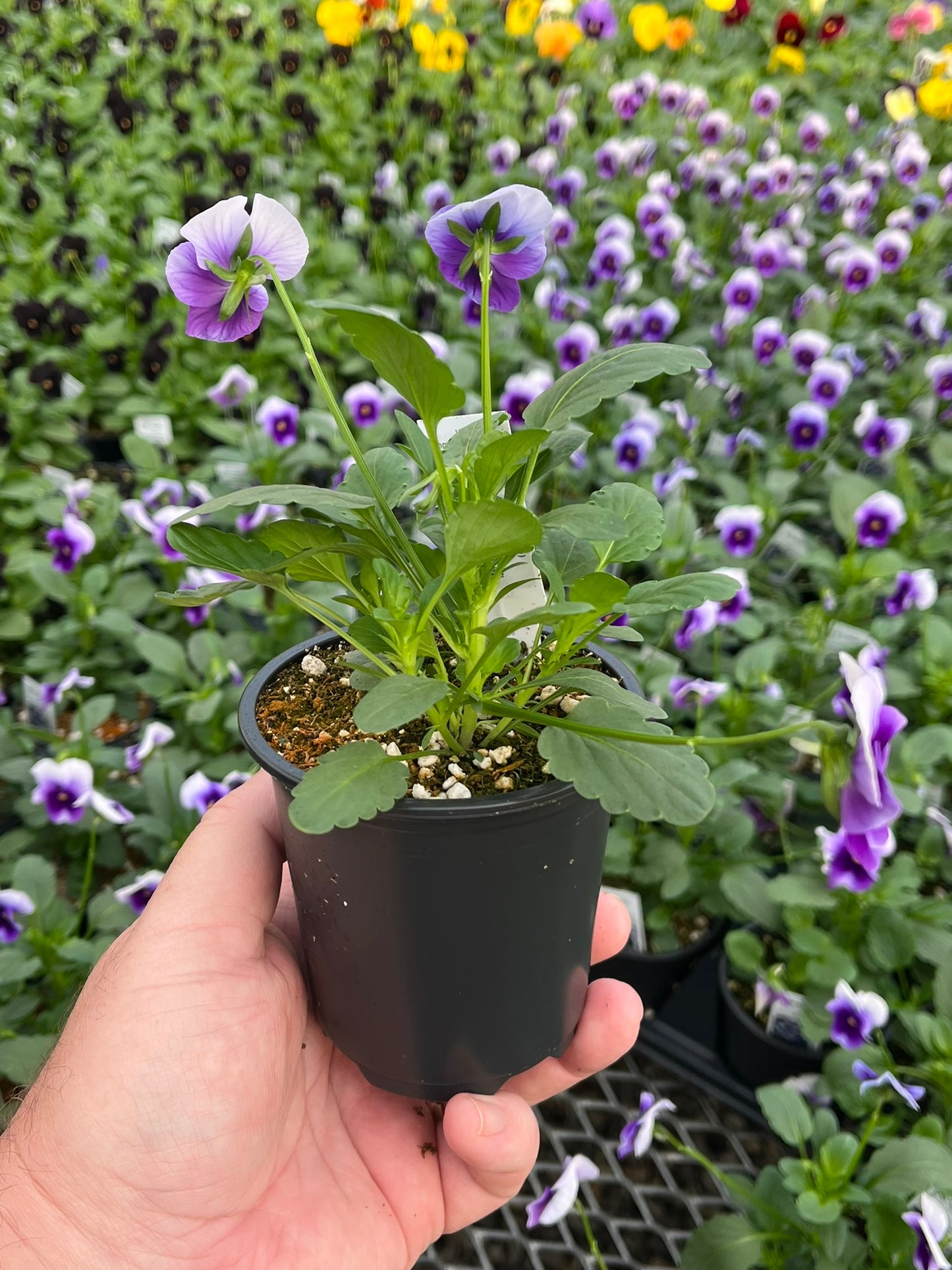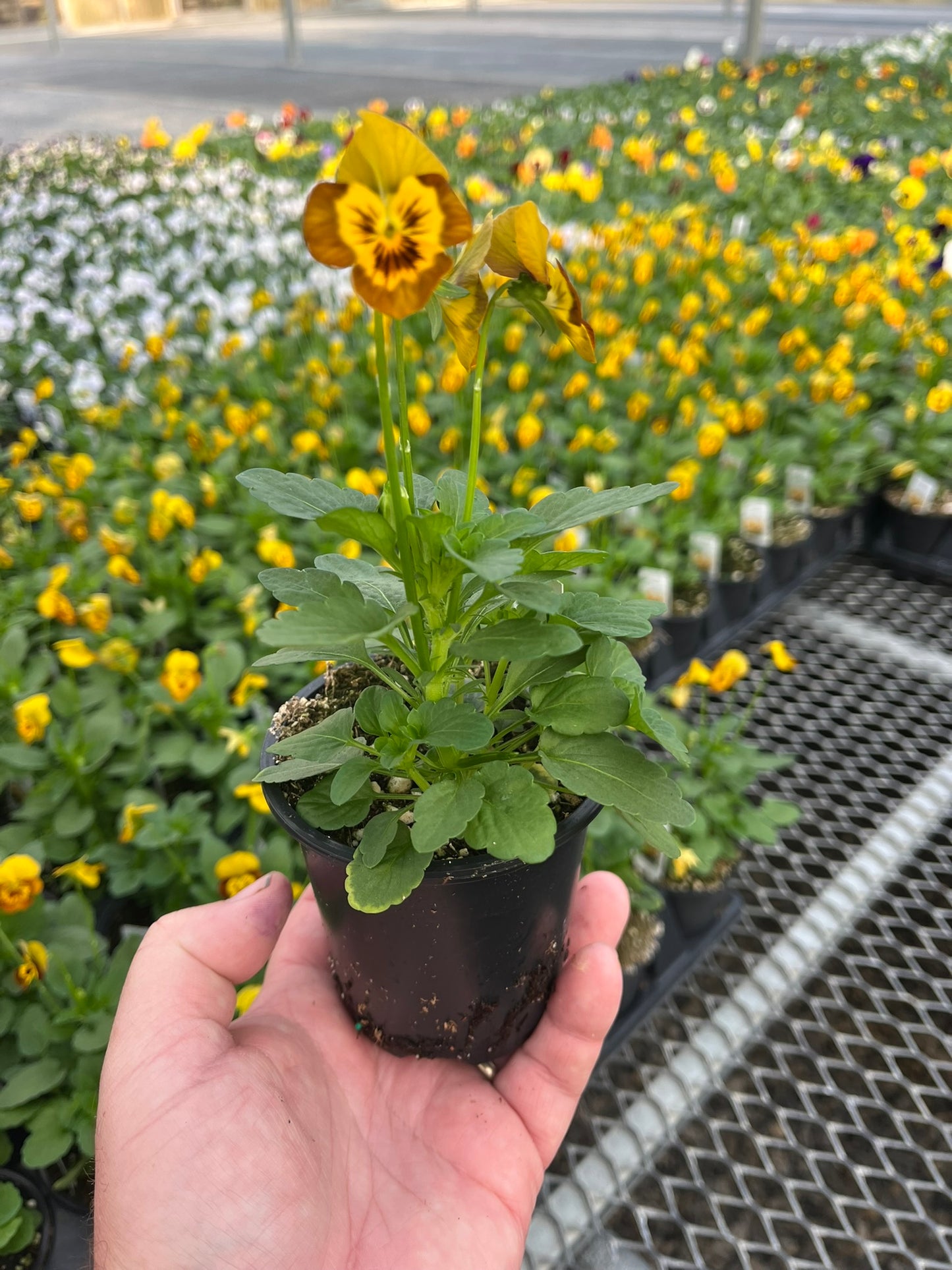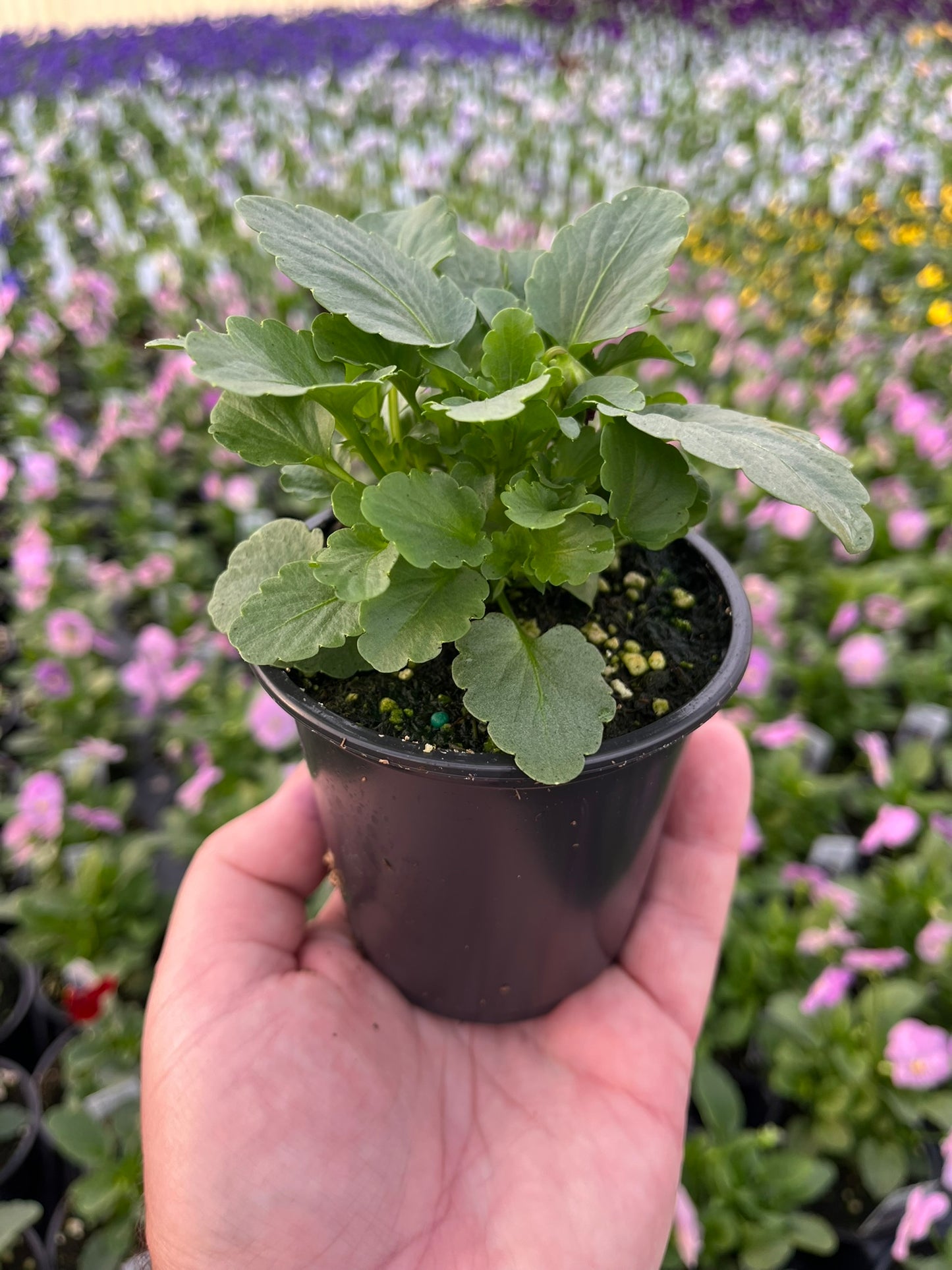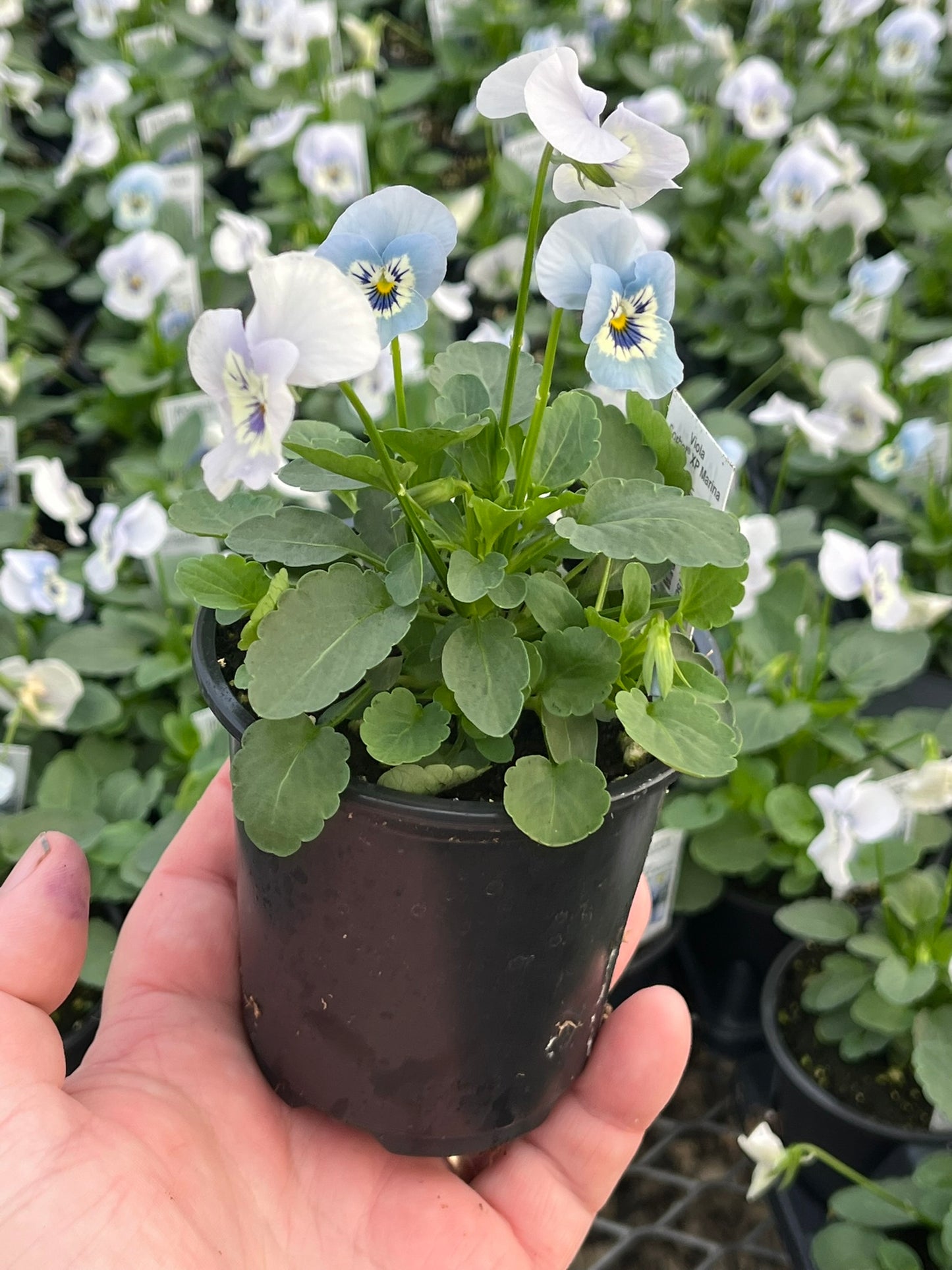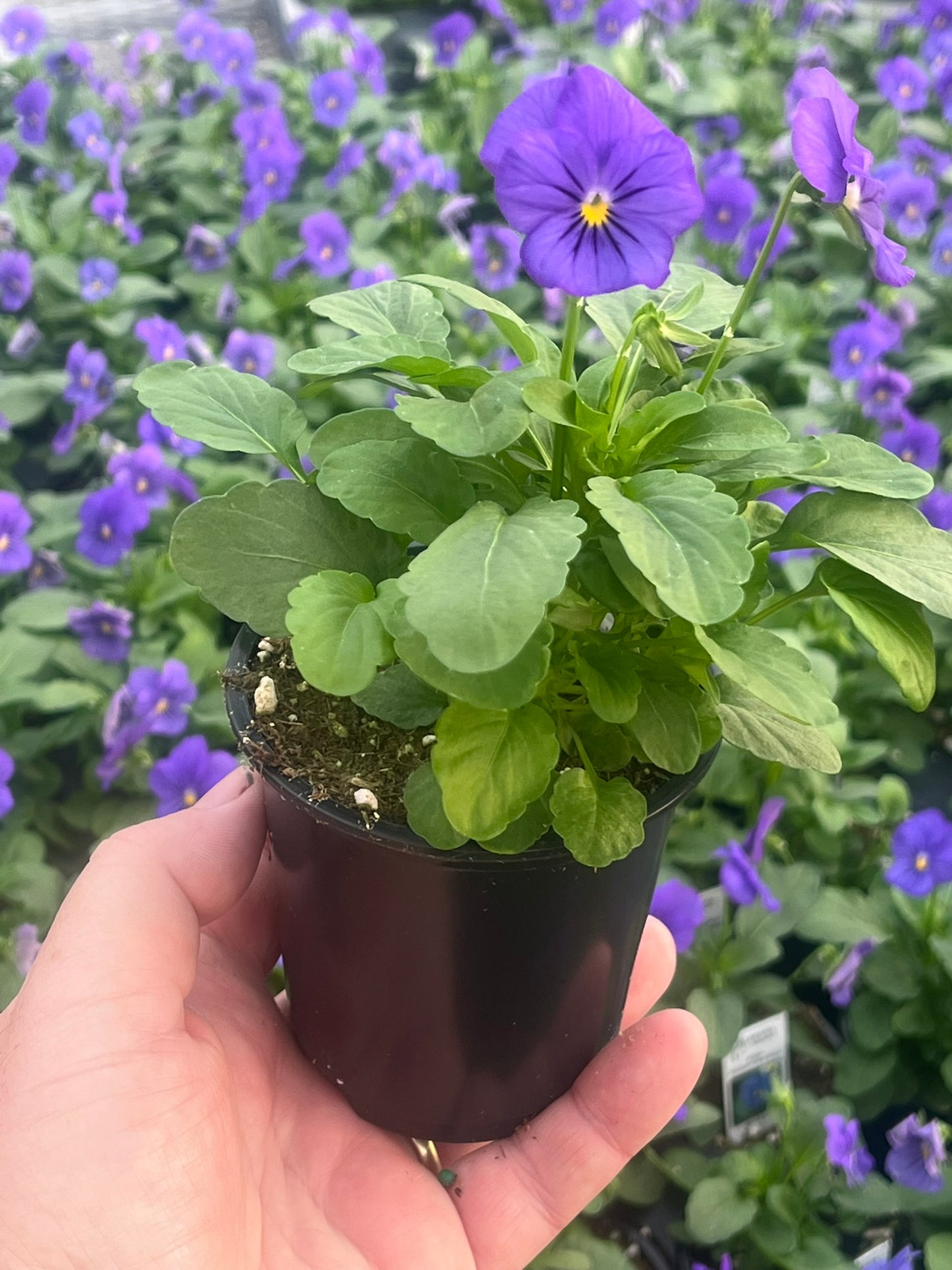Plant Hoarder
Viola, Black
Viola, Black
Couldn't load pickup availability
Share
Hardiness Zone:4, 5, 6, 7, 8, and 9
Sun Exposure:Full Sun and Part Shade, Mostly Sun
Viola ‘Black’ — Bold, Velvet Blooms for Cool-Season Drama
Want color that stops you in your tracks? We’ve got you. Viola ‘Black’ brings deep, velvety petals that read as near-black in the garden. Each flower holds a small golden eye that glows like a tiny ember. The look is rich, modern, and surprisingly versatile. But most of all, it gives you dramatic color when the air feels crisp and many plants slow down.
In other words, this is cool-season flair with easy care.
Why We Love Viola ‘Black’
Black flowers are rare. That’s why ‘Black’ feels special in beds, borders, and containers. The petals are saturated and smooth, so the whole plant looks polished. Even a small planting makes a statement. After more than a few seasons, we’ve learned something simple: when you add a dark accent, every other color pops. White looks brighter. Pastels look cleaner. Gold glows.
We also love how tough it is in cool weather. Violas thrive in fall, winter (in mild areas), and early spring. They shrug off light frost and rebound after short cold snaps. Easy to plant. Easy to enjoy.
Where It Shines
-
Front borders and edging: A low ribbon of near-black blooms frames paths with style.
-
Containers and window boxes: Compact plants keep their shape and flower nonstop.
-
Hanging baskets: Gentle trails soften edges and highlight the dark petals.
-
Bulb partners: Pair with white tulips or yellow daffodils for instant contrast.
-
Entry accents: Two porch pots create a clean, modern welcome.
Instead of scattering color, cluster three to five pots for a designer look. The dark blooms tie everything together.
Quick Specs
-
Type: Cool-season annual (short-lived perennial in mild climates)
-
Bloom Time: Fall through spring in mild regions; spring to early summer in cooler zones
-
Height/Spread: About 6–8" tall × 8–12" wide
-
Light: Full sun to part shade (give afternoon shade as temps climb)
-
Soil: Loose, well-drained, and rich in organic matter
-
Water: Keep evenly moist; avoid soggy roots
-
Benefits: Cold tolerant, bee-friendly on mild days, compact habit
Color That Elevates Everything
Dark flowers make design simple. Viola ‘Black’ turns ordinary pairings into sharp combinations:
-
Black + White: Classic and crisp. Use white alyssum or white pansies.
-
Black + Chartreuse: Electric contrast with heuchera, lemon cypress, or creeping Jenny.
-
Black + Pastel: Cool balance with pale pink tulips or lavender stocks.
-
Black + Silver: Calm, modern mix with dusty miller and artemisia.
-
Black + Gold: Warm glow with daffodils, primrose, or yellow pansies.
Instead of competing, these partners let the viola’s depth do the talking.
Planting: A Simple Start
-
Choose the spot. Sun to part shade is best. In warming weather, light afternoon shade helps.
-
Prep the soil. Work in compost for drainage and steady moisture.
-
Space plants. Set 8–10" apart for a full, carpeted look.
-
Water in. Soak after planting to settle soil around roots.
-
Mulch lightly. A thin layer reduces splash and keeps moisture even.
Planting in containers? Pick a pot with real drainage, use high-quality potting mix, and add slow-release fertilizer at planting. Then feed lightly every 2–3 weeks for steady blooms.
Care: Easy Steps, Big Return
-
Water: Keep soil evenly moist. Not dry. Not soggy.
-
Feeding: Light, regular feeding = more flowers.
-
Deadhead: Pinch off spent blooms. In other words, remove the old to invite the new.
-
Shear if leggy: Trim lightly and watch fresh growth roll in.
-
Heat note: When summer heat arrives, blooms slow. Swap to warm-season annuals, then bring violas back in fall.
Cold Tolerance You Can Count On
Violas love cool air. They handle light frost and bounce back after short freezes. In Zones 7–10, plant in fall for winter-to-spring color. In colder zones, plant in early spring as soon as the ground can be worked. You’ll enjoy flowers until real heat settles in.
Design Moves We Reach For
-
Monochrome bowl: Fill a shallow bowl with all-black violas. Sleek and minimal.
-
Halo for bulbs: Ring tulips or daffodils with a low band of ‘Black’ for contrast and polish.
-
Edge the path: A steady ribbon darkens the border and makes surrounding colors pop.
-
Modern trio: Black viola, silver dusty miller, and chartreuse heuchera in one pot.
-
Night garden: Pair with white blooms and moon-pale foliage for evening glow.
Companion Planting
-
Cool flowers: White pansies, alyssum, lobelia, nemesia
-
Foliage friends: Dusty miller, lamb’s ear, heuchera, ornamental kale
-
Spring bulbs: White tulips, yellow daffodils, grape hyacinths
-
Herb accents: Thyme or sage for a soft cottage edge
These companions match the viola’s needs, so care stays simple.
FAQs — Quick Answers
Does ‘Black’ really look black?
Yes. In most light it reads near-black with a soft velvet finish and a tiny golden eye.
Is there fragrance?
Light and sweet on mild days. It’s gentle, not heavy.
Sun or shade?
Full sun to part shade. In warm regions, give afternoon shade to extend bloom.
Do pollinators visit?
Bees visit on warmer days. The small open blooms are inviting.
Can I use the blooms in the kitchen?
Many gardeners use viola flowers as garnish. Only use blooms you know are grown without chemicals and confirm edibility for your needs.
Seeds or starter plants?
Both work. Starters give instant impact. Seeds are great for massing and budget plantings.
Troubleshooting: Fast Fixes
-
Fewer flowers? Deadhead and feed lightly. Check light levels.
-
Yellowing leaves? Improve drainage and ease up on water.
-
Leggy growth? Shear by one-third. Fresh growth follows fast in cool weather.
-
Heat slump? Replace with summer annuals and replant when temperatures drop.
Instead of fighting the season, flow with it. Violas reward that rhythm.
What You’ll Receive
Depending on season and listing, Viola ‘Black’ is offered as robust starter plants for beds and containers or as premium seed for sowing. Either way, you get clean stock, reliable vigor, and the dramatic color you’re after. We focus on quality so you can plant with confidence.
How We’d Use It This Week
Start with two porch planters. Center a silver foliage plant (like dusty miller), then ring it with Viola ‘Black.’ Add a soft spill of chartreuse creeping Jenny at the rim. Edge your front walk with the same viola for a pulled-together look. After more than a week, buds open in waves. Keep moisture steady. Snip old blooms. Enjoy the rich, velvet glow every time you step outside.
Bring Home Velvet Contrast Today
We’re here to make cool-season color bold, simple, and fun. Viola ‘Black’ gives you dramatic petals, easy care, and design power that works in any space—beds, baskets, borders, and bowls. It turns everyday plantings into polished displays. But most of all, it shows up when you want color the most.
Shade-Luxe Color, Ready to Plant
